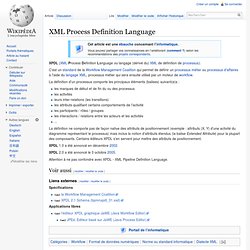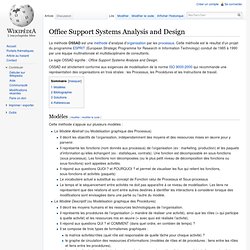

Blog BPM-Workflows. Actualités [11/04/2014] Smile gagne un Jedox Award Smile reçoit le trophée de Meilleur Partenaire Jedox de l'année. [10/04/2014] Smile co-organisateur du Bargento 2014 Smile et NBS System s’associent pour l’organisation du Bargento qui se tiendra le 7 octobre prochain à Paris. [18/03/2014] Smile participe à l’événement e-commerce One to One Smile sera présent à l’événement e-commerce One to One, le rendez-vous incontournable des leaders du e-commerce, du 18 au 20 mars 2014 à Monaco.

Toutes les actualités Top consultation. Open Source Business Process Management (BPM) and Workflow Softw. Activiti. Business Process Management (BPM) - Intalio The Private Cloud Co. Best business practices mean best business Cleaner, more refined and natural integration of best business practices isn’t a pipedream -- it's achievable with Intalio|bpms.

In highly competitive business markets, better business practices and processes can mean a big difference in everything from time-to-market to customer satisfaction to financial auditing. Integrating and managing those processes is no small job, but it doesn’t have to be a dreaded job either. Refine and integrate best practicesManage processes efficientlyEvolve processes as neededUtilize BPMS solutions from Intalio Embed best BPMS practices for higher compliance With Intalio tools, you can build and embed apps that optimize best practices and make more efficient use of services and systems without putting extra stress on your users -- or you.
Reliable and scalable BPMSProcess monitoring and dynamic validationStreamline compliance and auditing. Orchestra: Open Source BPEL / BPM Solution - Orchestra : The Ope. Event-driven process chain. Example of a more complex EPC diagram (in German).

G.M. Nijssen. Sjir Nijssen (born 1938) is a Dutch computer scientist, who was full-time professor at the University of Queensland. Nijssen is considered the founder of verbalization in computer science, and one of the founders of business modeling and information analysis based on natural language.[1] Biography[edit] Sjir Nijssen finished his study at the Eindhoven University of Technology in 1965, and started working at Philips at the department of Commercial Efficiency Research. From 1968 to 1970 he has been director of the educational institute "The Dutch Centre for Business and IT".
In 1970 he moved to the Control Data Corporation, a pioneer in the field of computer science with the European headquarters in Brussels in Belgium. During the period of 1982 to 1989 Nijssen was a full-time professor at the University of Queensland in Brisbane, Australia, where he worked together with Terry Halpin amongst others in further developing NIAM. Publications[edit] 1976. References[edit] External links[edit] Business Process Modeling Notation. Business process modeling language. XML Process Definition Language. Un article de Wikipédia, l'encyclopédie libre.

C’est un standard de la Workflow Management Coalition qui permet de définir un processus métier ou processus d'affaires à l'aide du langage XML, processus métier qui sera ensuite utilisé par un moteur de workflow. La définition d'un processus comporte les principaux éléments (balises) suivant(e)s : les marques de début et de fin du ou des processusles activitésleurs inter-relations (les transitions)les attributs qualifiant certains comportements de l'activitéles participants / rôles / groupesles interactions / relations entre les acteurs et les activités... La définition ne comporte pas de façon native des attributs de positionnement (exemple : attributs (X, Y) d'une activité du diagramme représentant le processus) mais inclus la notion d'attributs étendus (la balise Extended Attribute) pour la plupart des composants.
Certains éditeurs XPDL s'en servent pour mettre des attributs de positionnement. XPDL 1.0 a été annoncé en décembre 2002. Office Support Systems Analysis and Design. Un article de Wikipédia, l'encyclopédie libre.

La méthode OSSAD est une méthode d'analyse d'organisation par les processus. Cette méthode est le résultat d'un projet du programme ESPRIT (European Strategic Programme for Research in Information Technology) conduit de 1985 à 1990 par une équipe multinationale et multidisciplinaire de consultants. Le sigle OSSAD signifie : Office Support Systems Analysis and Design. OSSAD est strictement conforme aux exigences de modélisation de la norme ISO 9000:2000 qui recommande une représentation des organisations en trois strates : les Processus, les Procédures et les Instructions de travail. Modèles[modifier | modifier le code] Cette méthode s'appuie sur plusieurs modèles : BOC Group: Home. jBPM. jBPM is a flexible Business Process Management (BPM) Suite.

It makes the bridge between business analysts and developers. Traditional BPM engines have a focus that is limited to non-technical people only. jBPM has a dual focus: it offers process management features in a way that both business users and developers like it. What does jBPM do? A business process allows you to model your business goals by describing the steps that need to be executed to achieve that goal and the order, using a flow chart. This greatly improves the visibility and agility of your business logic, results in higher-level and domain-specific representations that can be understood by business users and is easier to monitor. The core of jBPM is a light-weight, extensible workflow engine written in pure Java that allows you to execute business processes using the latest BPMN 2.0 specification.
jBPM is also not just an isolated process engine. Professional Open Source Workflow, Groupware and Document Manage.